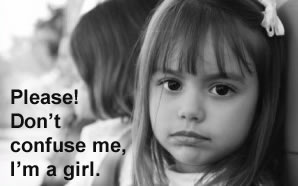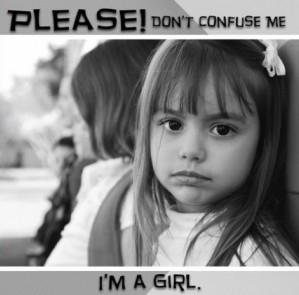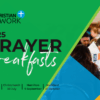
Stop Transgender Teaching in Schools – a mother’s reason for a petition
This article by Helen Houghton was originally posted by Family First New Zealand and has been republished with permission.
I started the petition in response to the Ministry of Education’s recent inclusion of transgender identity as part of the Health and Sexuality Curriculum. As a registered teacher, parent, and NZ taxpayer I object to social constructionist gender identity teachings taking precedence over established biological fact. I object to being branded as transphobic, simply for exercising my right to question critically what I as a teacher am being coerced into teaching to impressionable minds. I should be able safely to voice my human rights as an individual without being judged as transphobic or discriminatory.
Ironically, whilst accusing me of not accepting them and their worldview, opponents of my position are attempting to stereotype and pigeon-hole me and my supporters. It has been claimed that I might be someone who has led a sheltered life and is consequently threatened by people who are different from me. In fact, I currently have a number of roles in which I interact with and support a diverse range of people. I am a registered teacher, a psychology student, a parent, an advocate for women and a protector of children. As part of this advocacy, I work alongside a team of professionals who care for children who have suffered from extreme trauma. I also run a Charitable Trust, which supports women with parenting and educational programmes while empowering them to be the best version of themselves.
 My reasons for lodging the petition are to highlight the act of gross negligence that the Ministry of Education undertook by posting on Facebook their plans of ‘Inclusive Education’ for one minority group, leaving all other groups subservient to this biased view.
My reasons for lodging the petition are to highlight the act of gross negligence that the Ministry of Education undertook by posting on Facebook their plans of ‘Inclusive Education’ for one minority group, leaving all other groups subservient to this biased view.
The Ministry of Education published these intentions on the Te Kete Ipurangi site before consultation had taken place with the majority of teaching staff and principals.
A significant number of the education body was not made aware of the new Learning lntentions in the Health Curriculum, nor have many teachers been supplied with a copy of the Sexuality Curriculum guidelines, numerous resources linking to ideas of how to teach inclusiveness for LGBTQIA as well as links to YouTube videos of transgender youth have been suggested for use in our classrooms. There has been no stipulated age-appropriateness of the resources provided by Rainbow Youth and InsideOUT meaning any teacher could use them at will, with any age group level. I believe this undermines the professionalism of the high standard of code of ethics we as teachers are expected to uphold, yet those making policy decisions have failed to display them.
One of the headings within the Health Curriculum, on theTe Kete Irugangi site states; “Make LBTQAI content and themes visible across the curriculum then integrate LBTQAI” This allows no room for conscientious objectors to withdraw and therefore schools will not be safe and inclusive for all students. It should be noted that this is a requirement for all subjects to cover explicitly LBTQAI “content and themes”, therefore parental consent is assumed and does not have to be sought under National Educational Guidelines.
Gender stereotypes that are taught are not what ordinary mums and dads assume them to be., as multiple genders are taught as biological facts, including that a child can be neither male nor female. This is the sexualisation of our children under the guise of inclusivity and diversity. Many of the intentions are not age-appropriate. The learning intentions for each curriculum level are listed below:
Level 1 (5-7 Years old)
- A4: Describing different types of families
- (Mum’s new wife is picking me up from school today.)
- D1 & 2: Dealing with bullying and harassment and speaking out for others (Turning children into Language Police and Trans-activists)
Level 2 (7-9 Years old)
- C2: Affirming diversity, questioning gender stereotypes
- D2: Identifying locally available health care services
- (How to get puberty blockers)
- B2: Questioning and discussing gender stereotypes in games and physical activities
Level 3 (9-11 Years old)
- D2: Exploring community events that celebrate and affirm
- diversity (Having a nice family picnic at the Gay Pride Parade with its overt sexualisation)
Level 4 (11-13 Years old)
- A4: Critiquing dominant messages about body image and body size,
- and affirming diversity. (Note: Affirming diversity, not simply understanding it.)
- D1: Critiquing gendered and sexualised media images
The prescribed curriculum teaching multiple genders undermines the human rights of individual teachers, many of whom hold different opinions about who should be discussing Gender Dysphoria with children. For the majority of teachers, being directed to enforce these controversial beliefs when they don’t believe them will create a learning culture of mistrust, not only within the education body but impacting crucial relationships of trust between student, parent and teacher. The integrity and moral principles of every teacher are being attacked. Teachers also do not have a right to go against the family values of their students, all the while instilling confusion into children, who are hearing misleading educational content. Research results illustrate the power of environmental influence on human development. Who can a child trust when the teacher is being forced to teach subject matter that is not age or developmentally appropriate? This in turn goes against our mission statement as schools, to provide a safe learning environment. It impacts on the rights of children to be children, instead of pawns in adult world debates.
 We are interfering with nature by inserting into the curriculum an ideology that is not scientifically sound. The suggested Learning Intentions are not teaching acceptance but encouraging new gender options. This is no different from having an expectation for children, parents and society to conform to this social engineering. I don’t recall any time in the history of our education system that we have adopted classical conditioning as a teaching tool in our democratic country.
We are interfering with nature by inserting into the curriculum an ideology that is not scientifically sound. The suggested Learning Intentions are not teaching acceptance but encouraging new gender options. This is no different from having an expectation for children, parents and society to conform to this social engineering. I don’t recall any time in the history of our education system that we have adopted classical conditioning as a teaching tool in our democratic country.
This article by Helen Houghton was originally posted by Family First New Zealand and has been republished with permission.






